How to Choose the Best LED Strip: A Buyer’s Guide
Table of Contents
LED strip lights are a versatile, energy-efficient lighting solution perfect for both homes and commercial spaces. From accenting decor to creating ambiance, their flexibility, long lifespan, and modern features like dimming and color options make them a popular choice.
In this guide, you’ll discover how to choose the best LED strips for your needs—whether for style, function, or both.
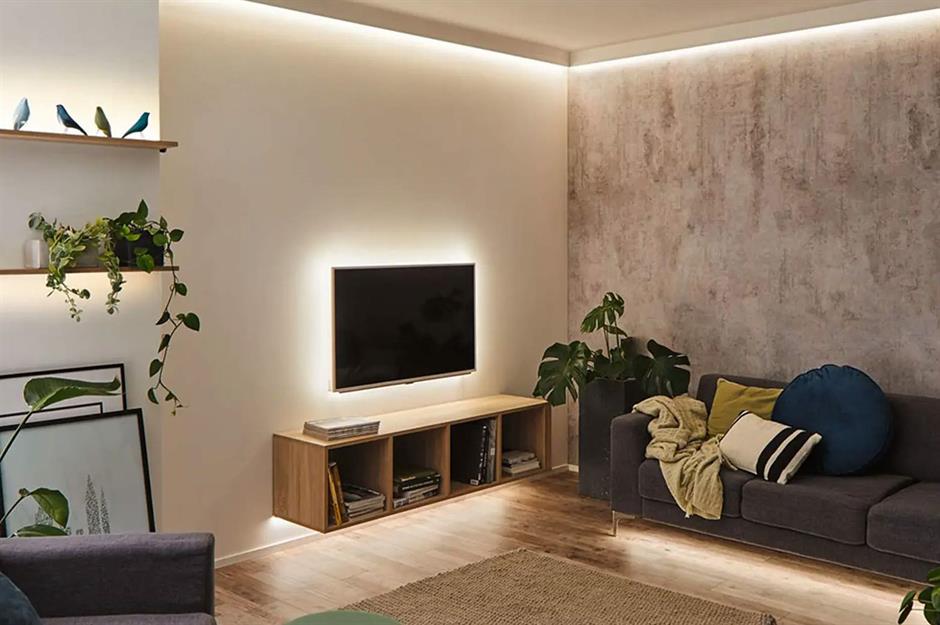
Key Factors to Consider: Brightness, Lumens, and More
When selecting the best LED strip lights for your needs, evaluating several vital factors that impact performance, aesthetics, and functionality is essential. Understanding how brightness, lumens, and other technical aspects play a role will help you make an informed choice and ensure your lighting solution is tailored to your specific requirements. Let’s break down these critical considerations:

1. Brightness (Measured in Lumens)
One of the most important aspects to consider when purchasing LED strip lights is brightness, measured in lumens. The lumen output determines how much light the strip will emit, directly affecting the overall illumination of the space. Unlike watts, which measure energy consumption, lumens indicate the actual brightness level of the lights.
- Low Lumens (150-300 lumens per meter): These are suitable for accent lighting or subtle effects, such as behind TV units, under cabinets, or around architectural features.
- Medium Lumens (450-700 lumens per meter) are perfect for general ambient lighting, creating a comfortable atmosphere in living rooms and bedrooms, or enhancing outdoor spaces.
- High Lumens (800+ lumens per meter): These are ideal for task lighting or spaces that require bright, focused illumination, such as kitchens, workshops, or office settings.
When choosing brightness levels, consider how the strip lights will be used. Accent lighting requires fewer lumens, while task lighting demands higher brightness for better visibility.
2. Color Temperature (Kelvins)
Color temperature, measured in Kelvin (K), is another critical factor that significantly influences a space’s atmosphere and mood. The right color temperature will depend on the lighting’s purpose and the environment in which it’s used.
- Warm White (2700K—3000K): This white produces a soft, yellowish hue, ideal for creating a cozy, inviting atmosphere in living rooms, bedrooms, or dining areas.
- Neutral White (3500K—4500K) offers balanced, natural light, perfect for spaces where a calm, clean look is needed, such as bathrooms, kitchens, or offices.
- Cool White (5000K – 6500K): Delivers a bright, bluish-white tone that mimics daylight. This is best suited for task-oriented spaces like garages, workshops, or outdoor lighting.
Understanding how color temperature impacts the look and feel of a room will help you create the right ambiance for each area.

3. Color Options (RGB and RGBW)
RGB and RGBW LED strips are popular for those looking to add dynamic and colorful lighting effects. RGB (Red, Green, Blue) LED strips allow you to create a wide range of colors by mixing these base colors. You can change colors, create color transitions, and set different lighting modes with a suitable controller.
- RGB LED Strips Provide vibrant colors, making them great for mood lighting, gaming rooms, or entertainment areas where you want to add a fun, dynamic touch.
- RGBW LED Strips: These strips include an additional white diode, offering the flexibility to switch between colorful and traditional white light. This is perfect for spaces requiring functional and decorative lighting, such as kitchens or home theaters.
RGB and RGBW strips offer creative versatility, making them ideal for parties, holiday lighting, or spaces where customization is key.
4. Dimmability and Controls
For ultimate flexibility, choosing LED strips with dimmable features is a smart move. Dimmable LED strips allow you to adjust the brightness level, providing greater control over the atmosphere in the room.
- Dimmers: Allow you to create the perfect lighting intensity, whether you need bright task lighting or a soft, relaxing glow.
- Smart Controls: Many modern LED strips come with smart functionality, enabling you to control the lights via a smartphone app, voice assistant (like Alexa or Google Assistant), or a remote. This feature allows you to change the color, brightness, and mode without having to physically access the lights.
Having dimmable or smart-control LED LED strips adds convenience and helps create a more personalized lighting experience.
5. Strip Length and Customization
Another important factor to consider is the length of the LED strip lights. LED strips typically come in reels of 5 meters, but can be cut to fit custom lengths depending on your needs. It’s important to measure the area where you plan to install the strips to ensure you get the right amount.
- Cuttable Strips: Look for strips that can be cut at marked intervals, which gives you more flexibility in fitting them into tight or irregular spaces.
- Connectors: Some LED strip lights come with connectors that allow you to easily link multiple strips together, extending the length if needed for larger installations.
Whether you’re lighting up a small shelving unit or a large ceiling cove, having the option to cut or extend the strips will ensure a perfect fit.
6. Power Supply (Watts and Voltage)
The power supply is a crucial element in any LED strip light installation. Different strips require different wattages and voltages to function efficiently. It’s essential to choose a power supply that matches the needs of your LED strips to avoid overloading or underpowering them.
- Voltage: LED strips typically operate at 12V or 24V. Ensure you choose a compatible power supply based on the voltage requirements of your strips.
- Wattage: Calculate the total wattage by multiplying the wattage per meter by the total length of your strips. Make sure the power supply you choose can handle the total wattage output to ensure optimal performance and avoid overheating.
Using the correct power supply ensures the longevity and efficiency of your LED strip lights.
7. IP Rating for Water Resistance
If you plan to install your LED strip lights in areas exposed to moisture or dust, such as kitchens, bathrooms, or outdoor spaces, it’s crucial to consider the IP rating (Ingress Protection).
- IP20: Suitable for indoor use where moisture and dust are not a concern, such as living rooms or bedrooms.
- IP65: Ideal for damp environments, such as kitchens or bathrooms, where water splashes may occur.
- IP67: Best for outdoor installations or areas exposed to heavy moisture, such as gardens, patios, or pool areas.
Choosing the right IP rating will ensure your LED strips are protected and perform well in their environment.
8. Heat Dissipation and Lifespan
Quality LED strip lights are designed to last, but one important factor to ensure longevity is heat dissipation. LED lights generate heat, and if not properly managed, this can shorten the lifespan of the strips.
- Aluminum Channels: These can be used to mount the strips, helping dissipate heat and protect the lights from dust and damage.
- Heat-Safe Designs: Look for LED strips with built-in heat-resistant materials or designs that promote better airflow and heat management.
By carefully considering these key factors—brightness, color temperature, customization options, power supply, and more—you’ll be well-equipped to choose the best LED strip lights for your specific needs. MyLikeLed offers a wide range of high-quality LED strip lights that cater to different lighting preferences, from energy-efficient task lighting to creative ambient solutions. Whatever your project, MyLikeLed has the perfect LED lighting solution for you.
Types of LED Strips: RGB, Waterproof, COB, and More
When it comes to LED strip lights, there are various types available, each offering unique features and capabilities to suit different applications. Whether you’re looking for vibrant color-changing effects, durable outdoor options, or ultra-bright task lighting, understanding the different types of LED strips will help you make the best choice for your space. Let’s explore some of the most popular types of LED strips, including RGB, waterproof, COB, and more.
1. RGB LED Strips

RGB LED strips are among the most versatile and popular options for creating colorful, dynamic lighting. These strips contain red, green, and blue LEDs that can be combined in different ways to produce a wide range of colors. With an RGB controller, you can change colors, adjust brightness, and even create lighting effects such as flashing, fading, or color cycling.
- Best for: Accent lighting in living rooms, gaming setups, entertainment areas, and decorative lighting for events or holidays.
- Key Features: Multi-color options, programmable lighting effects, and flexibility for creative designs. Some RGB strips also offer compatibility with smart home systems, allowing control via smartphone apps or voice assistants.
RGBW LED Strips take it a step further by adding a dedicated white LED, allowing you to switch between colorful lighting and pure white light for more practical uses, such as general room illumination.
2. Waterproof LED Strips
For outdoor or moisture-prone areas, waterproof LED strips are an excellent choice. These strips are designed with a protective coating or casing that makes them resistant to water, dust, and other environmental factors. The level of protection is determined by their IP rating (Ingress Protection), with higher numbers offering better resistance.
- Best for: Outdoor patios, gardens, pool areas, bathrooms, and kitchens where exposure to moisture or water is a concern.
- Key Features: Available in a range of IP ratings. For example, IP65 strips are splash-proof and great for outdoor lighting under awnings, while IP67 and IP68 strips are fully waterproof and suitable for submerged installations or areas exposed to heavy moisture.
Waterproof LED strips ensure durability and safety, making them ideal for outdoor aesthetics and functional lighting in harsh environments.
3. COB LED Strips (Chip On Board)
COB LED strips represent a newer innovation in LED technology, offering a much denser and more uniform light output than traditional SMD (Surface Mounted Diode) LED strips. In COB strips, multiple LED chips are directly mounted on a single board, which creates a continuous, smooth line of light without the visible gaps or “hotspots” that can sometimes occur with standard LED strips.
- Best for: High-quality task lighting, commercial spaces, under-cabinet lighting, and any area requiring smooth, even illumination.
- Key Features include high lumen output, excellent heat dissipation, and a seamless light appearance with no visible LED dots. COB strips are often more energy-efficient and provide better light quality than standard LED strips.
COB LED strips are ideal when you need robust and consistent lighting, especially in spaces where aesthetics and functionality are equally important.
4. SMD LED Strips (Surface Mounted Diode)
SMD LED strips are the most common type of LED strip lighting available. SMD refers to the small individual diodes mounted on the strip. These strips come in different sizes and configurations, allowing for various brightness levels and color options.
- Best for: General-purpose lighting, including accent lighting, under-shelf lighting, or anywhere you need flexible and bright illumination.
- Key Features: SMD strips are available in different brightness levels (lumens), color temperatures, and configurations (such as single-color, RGB, or RGBW). They are affordable, versatile, and easy to install.
SMD LED strips balance brightness, energy efficiency, and cost, making them a popular choice for home and office lighting projects.
5. Smart LED Strips
Smart LED strips bring convenience and customization to a new level by allowing control through a smartphone app, voice assistant, or remote. These strips often integrate with popular smart home systems like Amazon Alexa, Google Home, or Apple HomeKit, making it easy to control your lighting remotely, set schedules, and customize lighting scenes.
- Best for Tech enthusiasts, smart homes, or spaces where you want to automate lighting control and integrate it with other smart devices.
- Key Features include wireless control, customizable settings for brightness and color, and the ability to set schedules or sync the lighting with music or entertainment systems.
Smart LED strips are perfect for creating a seamless, high-tech lighting experience with the added benefit of automation and control.
6. High CRI LED Strips
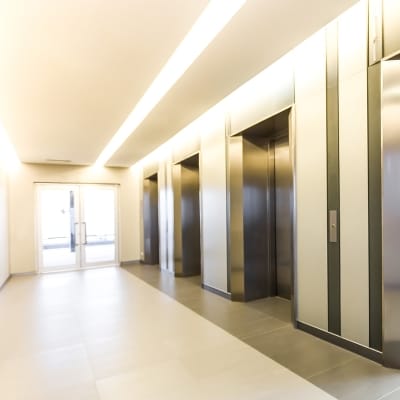
CRI (Color Rendering Index) measures how accurately a light source displays colors compared to natural sunlight. High CRI LED strips (CRI 90 or above) are designed to render colors more faithfully, making them an excellent option for spaces where accurate color perception is essential.
- This product is best for Art studios, photography setups, retail stores, or any environment where color accuracy is important.
- Key Features: Superior color rendering, often available in various color temperatures, and ideal for highlighting true colors and fine details.
High CRI LED strips are perfect for showcasing products, artwork, or other items where accurate color reproduction is critical.
7. UV LED Strips
UV LED strips emit ultraviolet light, which is invisible to the human eye. They can be used for special effects, disinfection, or curing applications. These strips are often used to create “blacklight” effects or in industries like printing, where UV curing is necessary.
- It is best for Creating glow-in-the-dark effects, party decorations, scientific research, and industrial applications such as curing adhesives or coatings.
- Key Features: It emits UV-A light (typically around 395-405nm) and can be used for artistic effects, fluorescence, or practical industrial uses.
While UV LED strips are not typically used for general lighting, they have specialized applications in entertainment and industrial fields.
8. 12V vs. 24V LED Strips
When choosing LED strips, voltage is another factor to consider. 12V and 24V LED strips are two common options, each with its own advantages based on the power requirements and installation size.
- 12V LED Strips: These are widely used for small-scale residential lighting projects. They are ideal for shorter runs and more superficial installations.
- 24V LED Strips are better suited for larger, more extensive installations, as they can handle longer runs without significant voltage drops.
Depending on the size and scale of your project, you can choose between 12V and 24V LED strips. 24V strips are often more efficient and practical for long installations or commercial use.
Applications: Where and How to Use LED Strips
LED strip lights have gained immense popularity due to their versatility and ability to transform spaces with minimal effort. Whether you want to enhance your home, office, or outdoor area, LED strips provide endless possibilities for creative lighting solutions. From accent to task lighting, LED strips can be used in numerous ways to improve aesthetics and functionality. Let’s explore some of the most common and innovative applications of LED strip lighting and how they can elevate different spaces.
1. Under-Cabinet Lighting

One of the most popular uses for LED strip lights is under-cabinet lighting in kitchens and workspaces. Installing LED strips under cabinets provides task lighting that enhances visibility on countertops, making meal preparation and other tasks much more accessible. It also adds a modern, sleek look to the kitchen, giving the space a soft glow.
- Best for Kitchens, workshops, and offices.
- Benefits: Provides practical illumination for tasks, eliminates shadows, and adds a clean, contemporary aesthetic.
- Installation Tip: Choose warm white LED strips (3000K-4000K) for a cozy ambiance or cool white strips (5000K-6000K) for a brighter, more energetic workspace.
2. Accent Lighting for Furniture and Shelves
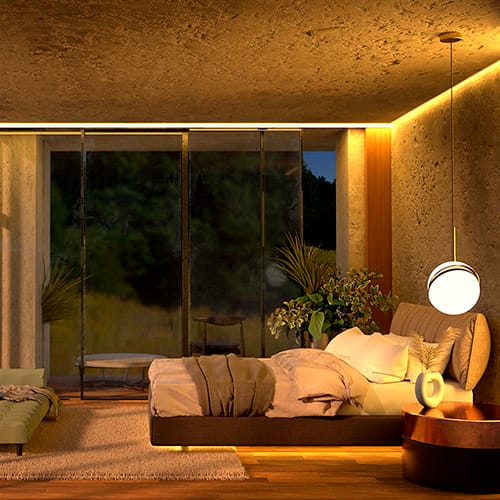
LED strips are perfect for adding subtle accent lighting to furniture, bookshelves, or display cabinets. You can create a beautiful, illuminated backdrop that highlights collectibles, artwork, or even everyday items by placing LED strips along the edges or backs of shelves. This is an excellent way to add depth and dimension to your room without overwhelming the space with harsh lighting.
- Best for Living rooms, bedrooms, display units, and entertainment areas.
- Benefits: Adds a touch of elegance and highlights focal points, enhancing the overall visual appeal of the space.
- Installation Tip: For a more dramatic effect, use RGB LED strips to introduce color-changing impacts that can be controlled based on mood or event.
3. Cove Lighting
Cove lighting, where LED strips are installed in a recess or ceiling alcove, is a popular application for creating indirect lighting that adds sophistication to a room. LED cove lighting can transform the atmosphere of a room by adding a soft, ambient glow to ceilings or walls, which enhances the architectural elements of a space.
- Best for: Living rooms, dining areas, bedrooms, and offices.
- Benefits: It creates a luxurious, ambient glow and highlights architectural features without direct glare.
- Installation Tip: Opt for dimmable LED strips to adjust brightness levels based on the occasion or time of day.
4. Backlighting for Televisions and Screens
Installing LED strip lights behind your TV or computer monitor is a simple yet effective way to enhance the viewing experience. TV backlighting reduces eye strain by providing a soft glow around the screen, making it easier to watch TV or use the computer in a dark room. It also adds a modern, high-tech aesthetic to your home entertainment setup.
- Best for: Home theaters, gaming setups, and workstations.
- Benefits: Reduces eye strain, improves contrast, and adds a sleek, futuristic look to the entertainment area.
- Installation Tip: Use RGB LED strips with a remote control for customizable color options that match the content you’re watching or the mood of your space.
5. Outdoor Patio and Garden Lighting
LED strips with waterproof or weatherproof features are perfect for outdoor lighting applications. They can be installed along walkways, patios, gardens, or outdoor seating areas to create a magical nighttime atmosphere. Whether used to highlight pathways or accentuate landscaping, LED strip lights make outdoor spaces more functional and aesthetically pleasing.
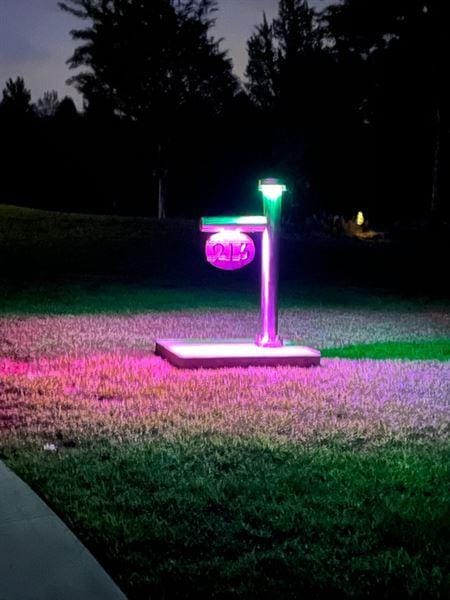
- Best for Patios, decks, gardens, and walkways.
- Benefits: Enhances safety and visibility while adding ambiance to outdoor spaces.
- Installation Tip: Choose waterproof LED strips (IP65 or higher) for durability in outdoor conditions. Opt for color-changing options to create dynamic outdoor lighting effects for evening events or gatherings.
6. Bathroom and Vanity Lighting
LED strip lights can also be installed in bathrooms, especially around mirrors or under vanities, to provide functional task lighting and a touch of elegance. Soft lighting around the mirror can make grooming, shaving, or applying makeup more accessible, creating a luxurious, spa-like atmosphere.
- Best for Bathrooms, vanity mirrors, and dressing rooms.
- Benefits: Offers bright, even illumination for tasks and adds a modern, polished aesthetic to bathroom designs.
- Installation Tip: Ensure you use waterproof LED strips (IP65) for areas exposed to moisture and humidity, especially near sinks, showers, or bathtubs.
7. Staircase and Hallway Lighting

Adding LED strip lights to stairs or along hallways enhances the overall look of your home. It improves safety. Well-lit stairs and hallways are more accessible, particularly at night, making LED strip lighting a functional and visually appealing solution for these areas.
- Best for: Indoor staircases, hallways, and entryways.
- Benefits: Improves safety and adds a contemporary, stylish element to your home design.
- Installation Tip: Install motion-sensor LED strips for automatic lighting as you walk through the hallway or up and down the stairs. This also saves energy by only lighting up when needed.
8. Automotive Lighting
LED strips are increasingly used for automotive lighting applications for practical and aesthetic purposes. From under glow lighting beneath the car to accentuating the dashboard or interior footwells, LED strips offer car enthusiasts a way to customize and personalize their vehicles.
- Best for: Car interiors, exteriors, undercarriage lighting, and dashboards.
- Benefits: Enhances the vehicle’s look and provides additional lighting for interior spaces.
- Installation Tip: Use RGB or color-changing LED strips for a dynamic and customizable lighting experience. For external applications, ensure you use automotive-grade waterproof strips.
9. Commercial and Retail Lighting

In commercial settings, LED strips are commonly used for display lighting, shopfronts, and product showcases. Their slim profile and bright output make them ideal for illuminating retail spaces, highlighting products, and creating eye-catching displays that attract customers.
- Best for: Retail stores, showrooms, and product displays.
- Benefits: Increases product visibility and enhances customer experience by creating an inviting and well-lit shopping environment.
- Installation Tip: Use high-CRI LED strips to display product colors accurately, especially in clothing, jewelry, and cosmetic stores where true color representation is essential.
10. Event and Party Lighting
LED strip lights are perfect for parties, events, and special occasions. Their flexibility allows you to create a vibrant, fun atmosphere, with many options offering customizable colors and lighting effects. LED strips can set the perfect mood, Whether for a wedding reception, birthday party, or holiday celebration.
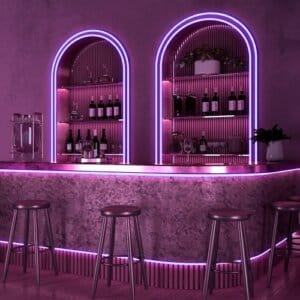
- Best for Weddings, birthdays, holiday decorations, and corporate events.
- Benefits: Provides endless color options and dynamic lighting effects that match any event’s theme.
- Installation Tip: Opt for RGB LED strips with programmable settings to change colors and lighting modes for different event stages, such as dimming for dinner and vibrant colors for dancing.
LED strip lights offer an incredible range of applications, from adding ambiance and accent lighting in homes to enhancing outdoor spaces and even vehicles. Their flexibility, energy efficiency, and customizable features make them ideal for virtually any setting. Whether you’re lighting up a kitchen, adding backlighting to a TV, or creating a festive atmosphere outdoors, MyLikeLed offers a wide variety of high-quality LED strips to suit all your needs.
Tips for Choosing a High-Quality LED Strip
With so many available options, choosing a high-quality LED strip light can seem overwhelming. Factors like brightness, color options, and durability can vary greatly between products, so understanding what to look for is essential. High-quality LED strips provide better performance and increase longevity and efficiency, saving you money in the long run. Here are some essential tips to guide you in selecting the best LED strip lights for your space:
1. Evaluate the Lumens per Meter (Brightness)
One of the most critical factors to consider is the brightness of the LED strip, which is measured in lumens per meter. The brightness needed depends on the application of the LED strip:
- Accent Lighting: A lower lumen output (150–300 lumens per meter) is sufficient for subtle lighting effects, such as behind TV units or on shelves.
- Ambient Lighting: Medium brightness (450–700 lumens per meter) is ideal for general lighting in living rooms, bedrooms, or dining areas, where a soft, welcoming glow is desired.
- Task Lighting: For areas that require bright, focused light, such as kitchens, workshops, or offices, choose strips with a higher lumen output (800+ lumens per meter).
Higher lumens provide more illumination, but too much brightness in the wrong environment can be overwhelming. Assess your lighting needs and choose lumens accordingly to ensure comfort and functionality.
2. Check the Color Temperature
The color temperature of the LED strip determines the ambiance of your space. It is measured in Kelvins (K), and the right choice depends on how you want the lighting to look and feel:
- Warm White (2700K–3000K): Produces a soft, yellowish light that creates a cozy and intimate atmosphere. It is ideal for living rooms, bedrooms, and dining areas.
- Neutral White (3500K–4500K): Provides a balanced, natural light suitable for spaces like kitchens, bathrooms, and offices where clear visibility is required.
- Cool White (5000K–6500K): This color mimics daylight and is perfect for task lighting in workspaces, garages, or areas that require bright, crisp light.
For optimal results, match the color temperature of the LED strip with the intended mood and purpose of the space.
3. Look for High CRI (Color Rendering Index)
CRI (Color Rendering Index) measures how accurately LED lights render colors compared to natural sunlight. A higher CRI value means colors will appear more vivid and accurate to life under the lighting.
- Choose LED strips with a CRI of 80 or above for general lighting.
- Aim for a CRI of 90 or higher for spaces where color accuracy is crucial, such as art studios, retail displays, or makeup areas.
High CRI strips ensure that objects appear in their true colors, making them ideal for spaces where aesthetics are essential.
4. Choose the Right Voltage (12V or 24V)
LED strips come in different voltages, typically 12V or 24V. The correct voltage depends on the size of your project and the length of the LED strip run.
- 12V LED Strips are ideal for smaller installations and short runs, such as under-cabinet lighting or small accent lighting projects.
- 24V LED Strips are better suited for longer runs, as they can power strips more efficiently over extraordinary lengths without experiencing significant voltage drops. This makes them ideal for larger projects like cove lighting, ample room illumination, or outdoor setups.
Make sure to choose a power supply that matches the voltage of your LED strip to ensure optimal performance.
5. Pay Attention to the IP Rating (Water and Dust Resistance)
Suppose you plan to install LED strips in environments where they might be exposed to water, dust, or outdoor elements. In that case, it’s crucial to consider the IP (Ingress Protection) rating, which measures the level of protection against these factors.
- IP20: Suitable for indoor use in dry environments like living rooms, bedrooms, and offices.
- IP65: Water-resistant and dustproof, making it suitable for kitchens, bathrooms, and areas where there might be light exposure to moisture.
- IP67 or IP68: Fully waterproof and ideal for outdoor applications, such as lighting for gardens, patios, or pool areas.
Ensure you select an LED strip with an appropriate IP rating based on where you plan to install it to avoid damage and ensure long-term performance.
6. Look for dimmability and Smart Control Options
To maximize your LED strip’s flexibility, consider choosing models with dimmable or smart control features.
- Dimmable LED Strips: These allow you to adjust the brightness to create the perfect ambiance for different occasions. You can set a soft, relaxing glow for evenings or increase the brightness when more light is needed.
- Smart LED Strips: These have advanced control options through apps, remote controls, or voice assistants like Alexa and Google Home. You can change colors, set schedules, or adjust brightness remotely, adding convenience and personalization.
Dimmable and smart-controlled LED strips provide greater flexibility and customization, making them ideal for various applications.
7. Consider the Number of LEDs per Meter
Another important factor is the density of LEDs per meter, which affects both brightness and the appearance of the light. More LEDs per meter result in smoother, more continuous lighting without visible gaps or “hotspots.”
- 30 LEDs per meter: Good for essential accent lighting where brightness is not the primary concern.
- 60 LEDs per meter: Offers better brightness and more even light, ideal for general-purpose and ambient lighting.
- 120 LEDs per meter or more: Provides bright, uniform light with no visible gaps, making it perfect for task lighting or areas requiring higher illumination levels.
A higher density of LEDs ensures a more professional and polished look, especially in visible or high-traffic areas.
8. Assess the Lifespan and Warranty
Quality LED strips are known for their long lifespan, but it’s always a good idea to check the manufacturer’s specifications to ensure you’re getting a reliable product. Look for LED strips with a lifespan of at least 50,000 hours to guarantee long-lasting performance.
Additionally, opt for brands that offer a warranty on their LED strips, as this is a good indicator of product quality and reliability. A warranty also provides peace of mind in case any issues arise after installation.
9. Check for Heat Dissipation
Heat can shorten the lifespan of LED strips if not managed properly. High-quality LED strips often come with built-in heat dissipation features or are designed to prevent overheating.
- Aluminum channels or mounting profiles are great accessories to help dissipate heat and protect your LED strips from damage.
- Strips with thermal management features ensure the LEDs stay cool during operation, extending their lifespan.
Ensure the strips you choose are designed to handle heat efficiently, especially for long or high-intensity installations.
10. Read Reviews and Purchase from Reputable Brands
Finally, to ensure you’re purchasing a high-quality LED strip, always check customer reviews and opt for reputable brands known for producing reliable lighting products. Reviews can provide insights into the durability, performance, and ease of installation of the LED strips you’re considering.
Brands like MyLikeLed offer a wide range of high-quality LED strips designed for different applications, ensuring you can find the right solution for your needs.
Conclusion
Choosing the right LED strip for your lighting project involves considering various factors, such as brightness, color temperature, and durability. Each space has unique lighting requirements, whether you’re creating a cozy ambiance in a living room or providing bright, functional task lighting in a workspace. By understanding the key features—like lumens, voltage, and IP ratings—you can select the LED strip that best meets your specific needs and enhances the overall atmosphere of your environment.
It’s also important to consider your LED strips’ long-term performance and flexibility. Features like dimmability, intelligent control, and the number of LEDs per meter can significantly impact the functionality and appearance of your installation. High-quality LED strips improve energy efficiency and ensure that your lighting system remains durable and visually appealing over time. Investing in premium options will give you more control over your lighting and provide a polished, professional look to your space.
By following these guidelines and purchasing from trusted brands like MyLikeLed, you can make confident decisions that bring style and practicality to your lighting projects. Whether you’re upgrading your home decor, enhancing outdoor spaces, or adding efficient lighting to commercial settings, selecting the right LED strip will ensure your project is a success. Contact us for the best LED strip light solutions!
FAQs
Choose brightness based on the purpose — higher lumens for task lighting, lower for accent lighting.
Look at the lumens per meter: over 1000 lumens/meter is very bright (for kitchens, workspaces), while 300–500 lumens/meter works well for mood lighting.
RGB strips can produce colors, while RGBW strips add pure white light.
If you want colorful lights only, RGB is enough. But if you want both colorful and clean white lighting for daily use, choose RGBW.
You need a waterproof LED strip if you’re installing it outdoors or in wet areas.
Look for an IP65 rating or higher for protection against water splashes or rain. For indoor dry spaces, waterproofing isn’t necessary.
Choose a power supply that matches the voltage and provides slightly more wattage than your strip needs.
First, check the voltage (usually 12V or 24V), then calculate the total wattage (watts per meter × length) and add 20–30% extra to avoid overload.
Yes, most LED strips are designed to be cut and reconnected at marked points.
Make sure you cut only at the indicated cut lines and use connectors or soldering to reattach pieces safely.

Hi, I’m Xylia Xiong, a sales professional with 14 years of experience in the LED strip light industry. I specialize in providing tailored solutions, leveraging my expertise in LED products and the latest industry trends. Known for effective communication and problem-solving, I’m dedicated to helping lighting manufacturers, importers, and distributors achieve their goals.
Let’s work together to create customized solutions that exceed expectations.
Related Posts

The Best LED Strip Lights You Can Buy Right Now

Comparing WS2811 Vs WS2812B: Key Differences


